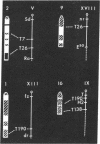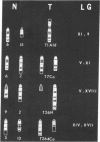Abstract
The mitotic chromosomes in primary cultured cells from mouse embryos of the translocation stocks, T(5;18)26H, T(5;11)7Ca, and T(14;17)264Ca, have been identified by their distinctive fluorescent-banding patterns after staining with quinacrine mustard. In this way, linkage group (LG) V has been assigned to chromosome 2, LGXVIII to chromosome 9, and LGXIV and LGXVII to either of chromosomes 3 or 13. The assignment of LGXI to chromosome 6 has been confirmed. The centromeres of chromosomes 1 (LGXIII), 2 (LGV), 9 (LGXVIII), and 16 (LGIX) have been located at the ends nearest the genes fuzzy (fz), Danforth's short tail (Sd), nervous (nr), and T of their respective linkage groups by a cytogenetic method. The centromere of the X (LGXX) has been tentatively assigned to the end nearest to the scurfy (sf) locus.
Keywords: linkage group, centromeres, fluorescent-banding patterns, quinacrine mustard
Full text
PDF
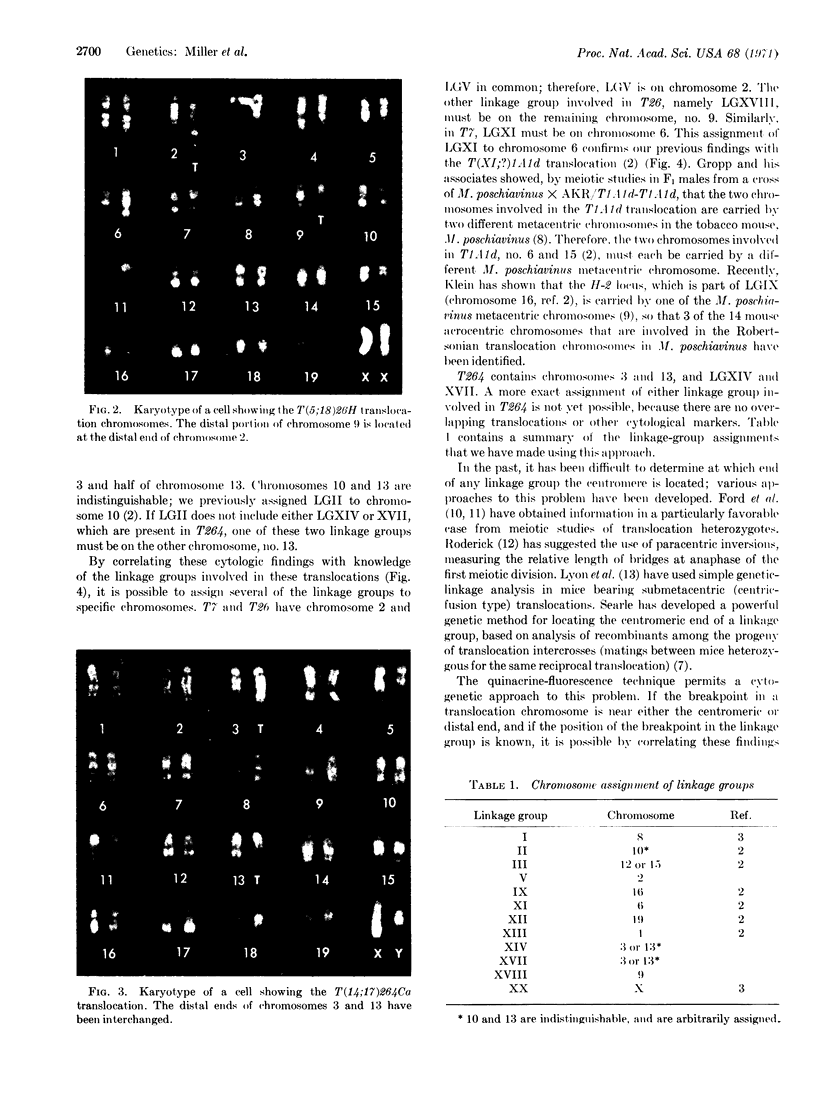
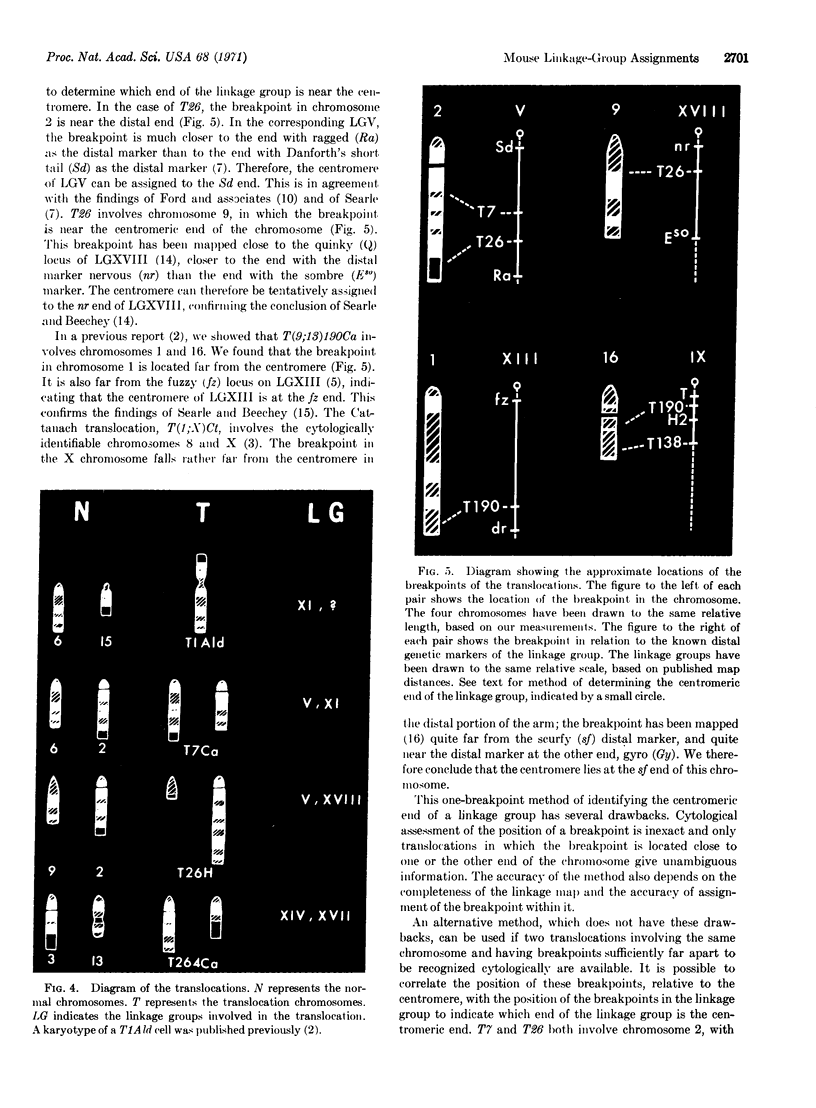
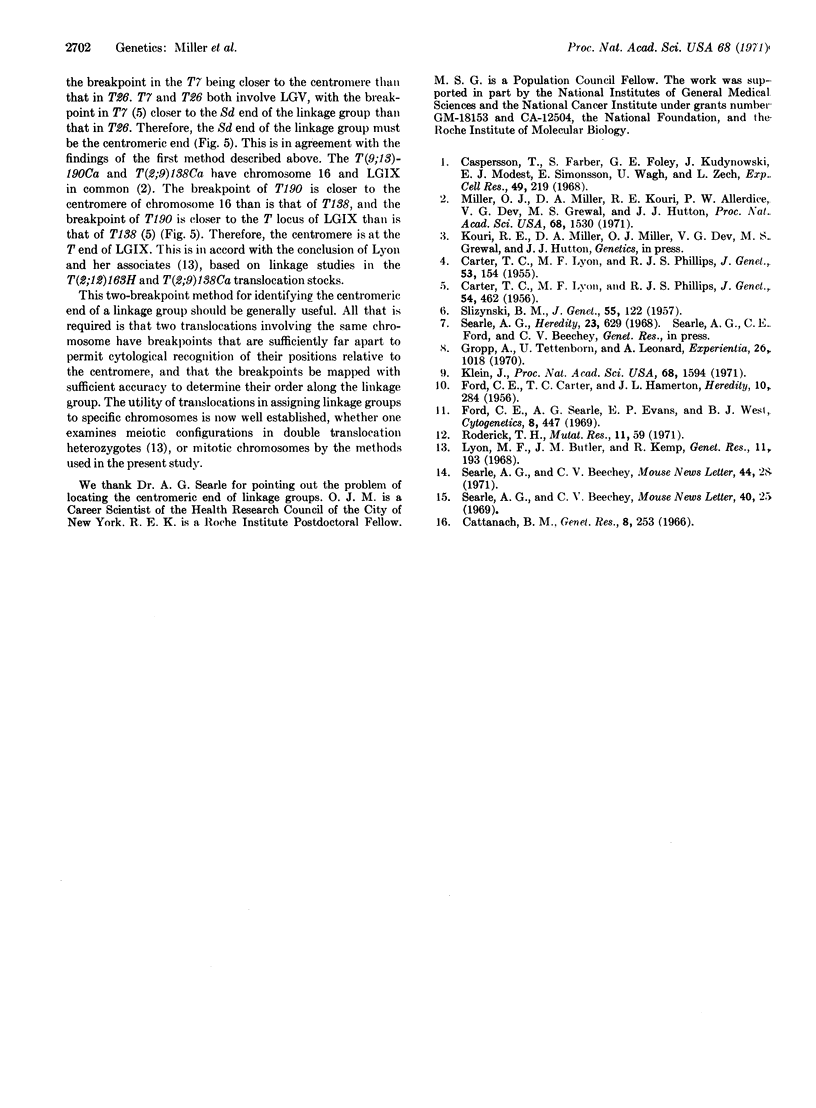
Images in this article
Selected References
These references are in PubMed. This may not be the complete list of references from this article.
- Caspersson T., Farber S., Foley G. E., Kudynowski J., Modest E. J., Simonsson E., Wagh U., Zech L. Chemical differentiation along metaphase chromosomes. Exp Cell Res. 1968 Jan;49(1):219–222. doi: 10.1016/0014-4827(68)90538-7. [DOI] [PubMed] [Google Scholar]
- Cattanach B. M. The location of Cattanach's translocation in the X-chromosome linkage map of the mouse. Genet Res. 1966 Oct;8(2):253–256. doi: 10.1017/s0016672300010107. [DOI] [PubMed] [Google Scholar]
- Ford C. E., Searle A. G., Evans E. P., West B. J. Differential transmission of translocations induced in spermatogonia of mice by irradiation. Cytogenetics. 1969;8(6):447–470. doi: 10.1159/000130056. [DOI] [PubMed] [Google Scholar]
- Gropp A., Tettenborn U., Léonard A. Identification of acrocentric chromosomes involved in the formation of "fusion"-metacentrics in mice. Proposal for nomenclature of M. poschiavinus metacentrics. Experientia. 1970 Sep 26;26(9):1018–1019. doi: 10.1007/BF02114170. [DOI] [PubMed] [Google Scholar]
- Klein J. Cytological identification of the chromosome carrying the IXth linkage group (including H-2) in the house mouse. Proc Natl Acad Sci U S A. 1971 Jul;68(7):1594–1597. doi: 10.1073/pnas.68.7.1594. [DOI] [PMC free article] [PubMed] [Google Scholar]
- Lyon M. F., Butler J. M., Kemp R. The positions of the centromeres in linkage groups II and IX of the mouse. Genet Res. 1968 Apr;11(2):193–199. doi: 10.1017/s0016672300011368. [DOI] [PubMed] [Google Scholar]
- Miller O. J., Miller D. A., Kouri R. E., Allderdice P. W., Dev V. G., Grewal M. S., Hutton J. J. Identification of the mouse karyotype by quinacrine fluorescence, and tentative assignment of seven linkage groups. Proc Natl Acad Sci U S A. 1971 Jul;68(7):1530–1533. doi: 10.1073/pnas.68.7.1530. [DOI] [PMC free article] [PubMed] [Google Scholar]
- Roderick T. H. Producing and detecting paracentric chromosomal inversions in mice. Mutat Res. 1971 Jan;11(1):59–69. doi: 10.1016/0027-5107(71)90032-7. [DOI] [PubMed] [Google Scholar]






